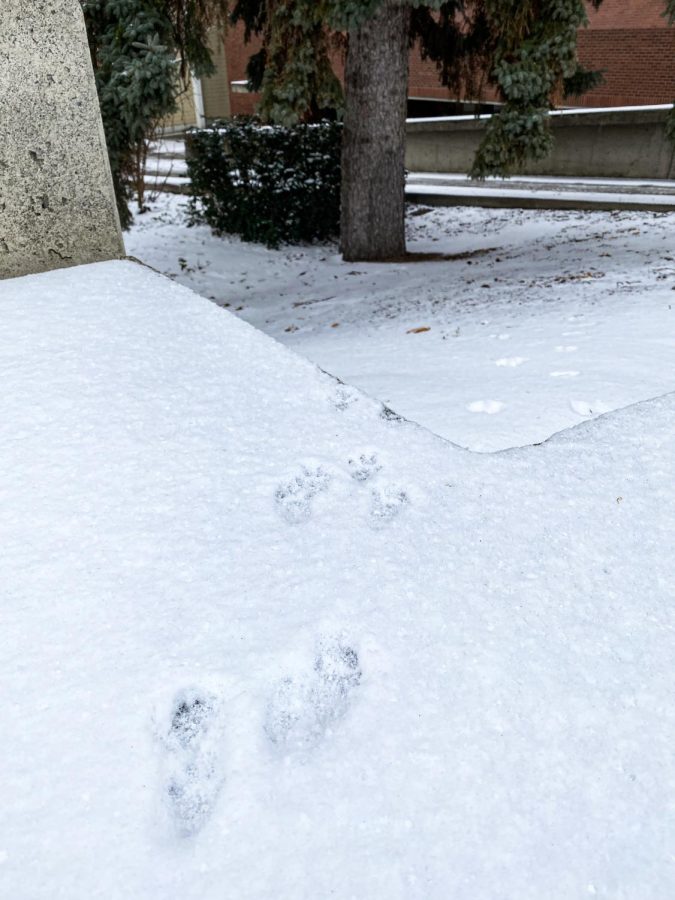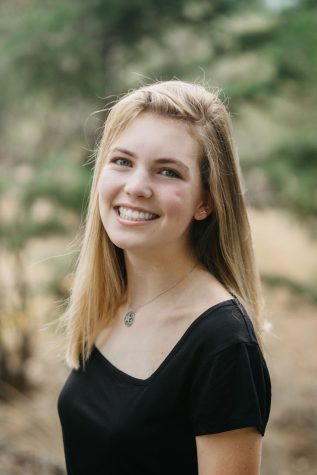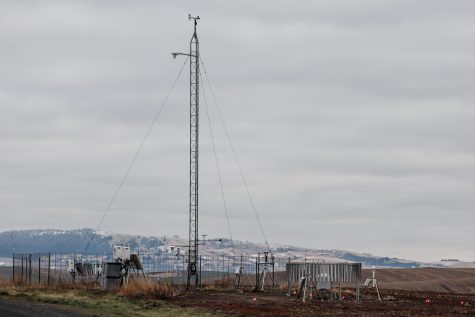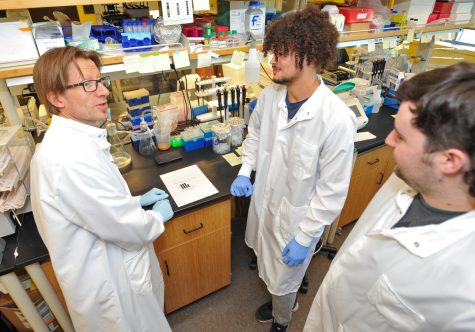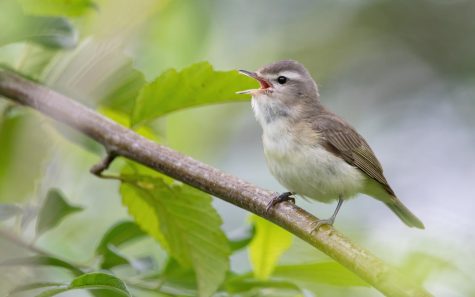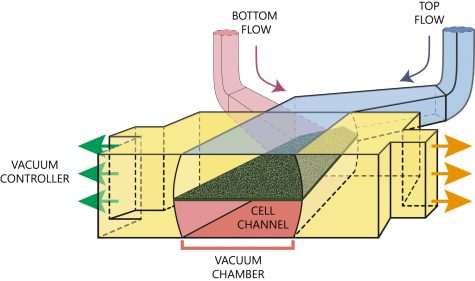Who made that print?
Learn how to recognize, identify tracks made by native species
Gray squirrel tracks adorning the snow in front of Eastlick Hall on Jan. 27.
February 3, 2022
Winter is a wonderful time of the year for hiking because snow is a superb tracking medium. Tracks are hard to miss in snow and are often well preserved.
Many species on campus leave distinctive tracks. On your way to class tomorrow, try a bit of tracking. Remember to stay aware of your surroundings – it is easy to become entranced by a set of tracks and forget to look up.
Three species dominate the campus track scene: gray squirrels, cottontail rabbits and red foxes.
Gray squirrels leave bounding tracks that have distinct toes: Four toes on the front paws and five on the rear, according to University of Michigan. The four prints form a box shape; the rear paws lie just to the outside of the front paws. The claws on each toe are often visible.
Squirrel tracks are commonly confused with those of cottontail rabbits. There are two main ways to tell them apart. Rabbit tracks are a similar size, but because of the extra fluffy paws, only four toes will be visible in the rear track, according to Nature Tracking.
Squirrel tracks also have long toes; rabbit front paws are rounder, with short toes. After you have examined a single track, follow the direction of the animal – gait is a book of its own when it comes to reading tracks!
Squirrels and rabbits are both bound, but rabbits set their front feet down first, drawing the rear feet up past them to complete abound, according to Wide Open Spaces. This creates an elongated, Y-shaped track with two staggered front paws behind an aligned pair of rear tracks.
One final, foolproof way to tell is looking where the animal is headed. Squirrel tracks nearly always dash back and forth between trees. Rabbit tracks, however, circle in and around bushes and meadows.
Where there are rabbits, there are foxes. Arriving on campus early in the morning reveals the ghosts of foxes trotting campus. Prints weave up and down hills and between buildings. Fox prints are quite small, only about 2 inches square. They are also round and often show the claw of each of the four front toes.
In the wild areas around the area, especially Kamiak Butte and the Colfax Trail, two other species leave their mark. Most tracks along those trails belong to white-tailed deer and coyotes.
Deer leave heart-shaped cloven hoof prints. Each hoof track has two distinct toes, and the tips point in the direction the deer was moving. Deer tracks can appear deceivingly large because they often register, meaning the hind track lands on top of the front track, according to Nature Mentoring. If deer are running, you may also see two small dots behind the hoof. These were made by the dewclaws as the foot sank into the snow.
Coyote tracks are often mistaken for those of domestic dogs. Unlike rounded dog tracks, coyote tracks are oblong, usually 2 1/2 inches long by 2 inches wide, according to Alderleaf Wilderness College. Dog tracks often lack claw marks, while coyote claws are usually visible in their tracks. Coyotes also move with purpose, following straight and efficient paths, while domestic dogs are prone to wandering.
Keep an eye out for rare tracks. A particularly striking one is the snow angel of death, which is a deep punch into the snow surrounded by a halo of feathered dashes. Snow angels are created by birds of prey diving to catch a meal, according to the Connecticut Audubon Society. As they pounce, their talons plunge into the snow. As they take off, their flight feathers sweep the surface.
To tell if a snow angel was made by a hawk or an owl, look for prey prints. Hawks hunt mainly by sight, so there will be rodent tracks leading up to the snow angel where they disappear … if the hunt was successful. Owls typically hunt prey tunneling beneath the snow, so there will be no tracks.
With a keen eye, you can reconstruct nature’s dramas. No matter where they go, animals leave evidence of their presence. Whether it prints, scats or nibbles on branches, there are plenty of signs for you to follow in the woods around the Palouse and on campus.

